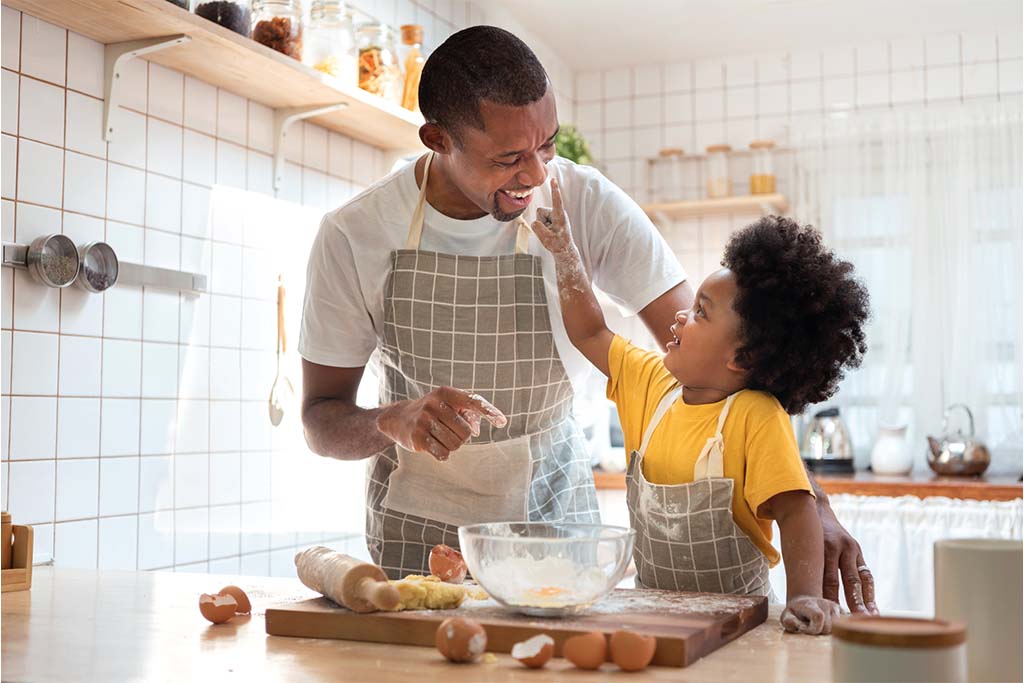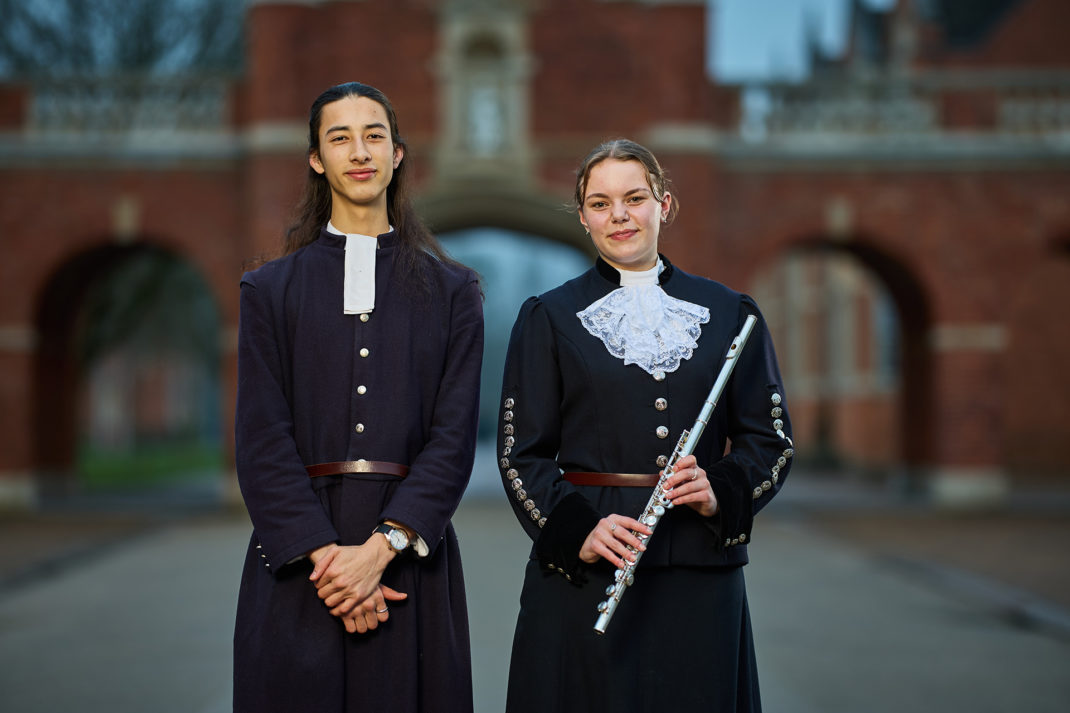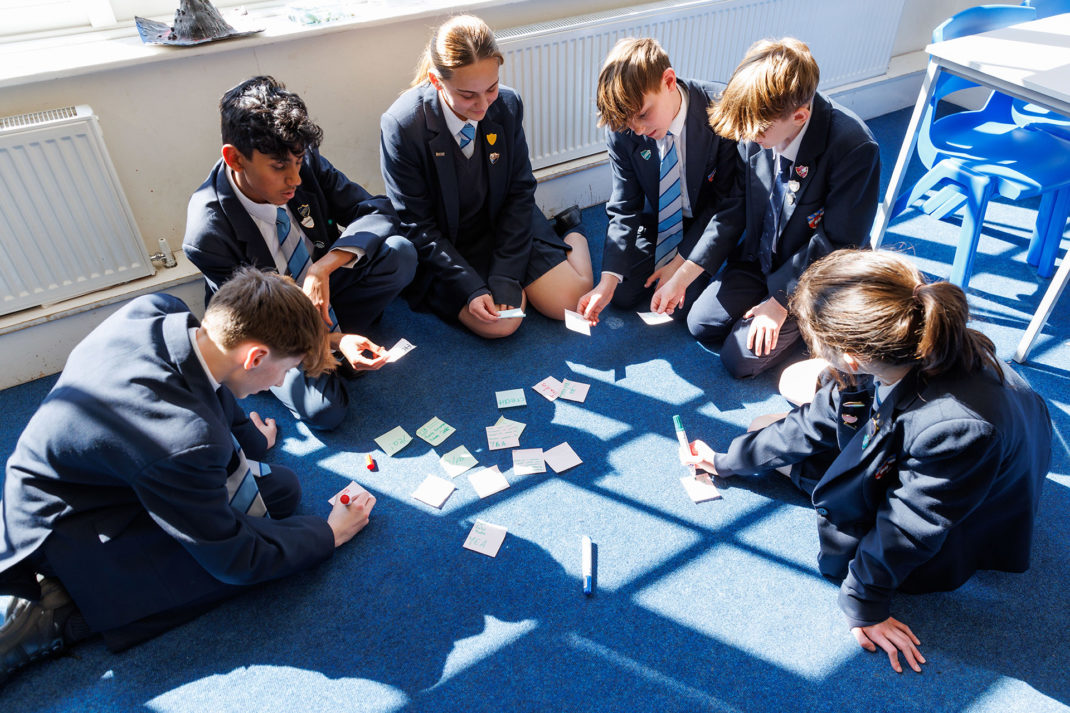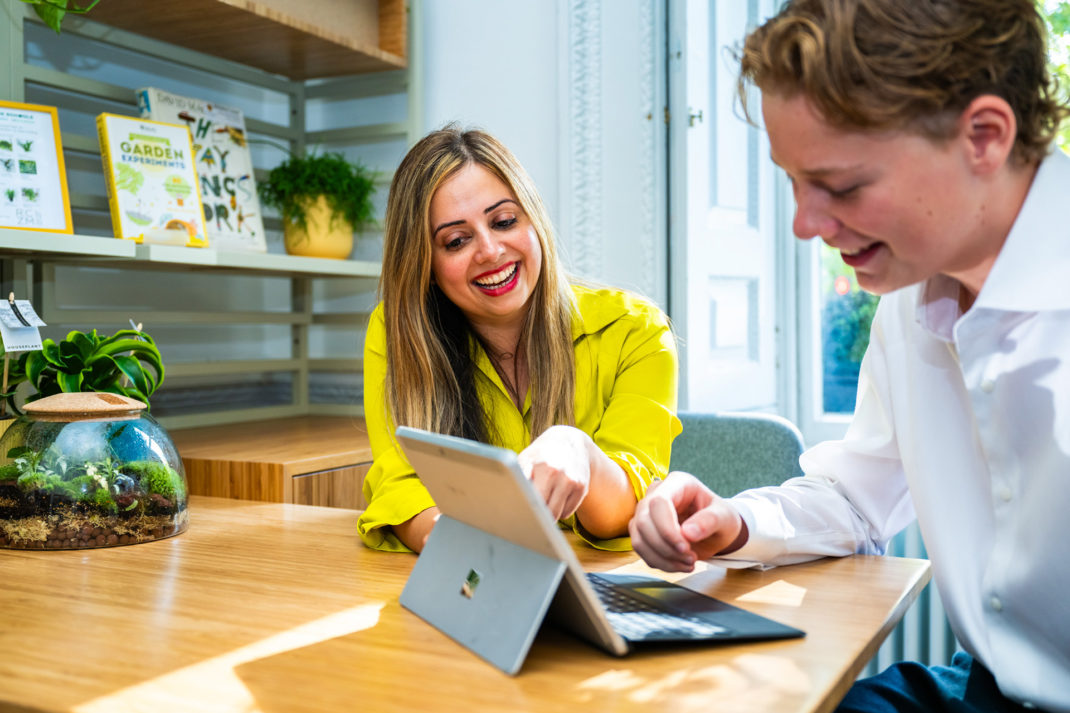Nursery: Happy Pre-schooler
By
3 years ago

10 Ways to keep your Pre-schooler Happy
Try these fun activities to entertain your little ones, says Aimee Kimbell,
Principal of Riverside Nurseries

1 Create a nature scavenger hunt
‘Education is a natural process spontaneously carried out by the human individual,’ said Maria Montessori, Italian educator who developed the well-known Montessori method, ‘… acquired not by listening to words but by experiences upon the environment.’ So, get outside and take the children on a nature scavenger hunt, either in the garden or out into the woods. Free online scavenger hunts (such as typicallytopical.com) can be printed out and ticked off when the child finds the item. And why not make up some riddles to make it a bit trickier and help with language development.
2 Help around the home
An important part of a Montessori classroom is the area referred to as ‘Practical Life’. At nursery, these tasks are usually set out on trays to isolate the activity; at home these can just be a list of jobs children can help with. These will not only teach your child an important life skill but also will promote the refinement of fine motor skills, hand-eye coordination, and concentration. Suggestions include: spreading crackers or sandwiches, peeling bananas, dish washing, pouring water, flower arranging, matching socks, and looking after themselves like brushing hair.

3 Make a mud kitchen
A mud kitchen is an outdoor setup for children to pretend to prepare and cook food using any combination of mud, sand and water. The messier the better and the more realistic pots and pans from a kitchen the better. When they’ve finished making the mud pie, they can make flower petal soup!
4 Get experimenting
Home experiments are great fun, and your child will be learning at the same time. Here are three different ones to try with items easily collected from around the house:
Magnetic and non-magnetic: Find a tray and divide in half with a label at the top one side saying magnetic and the other non-magnetic. Then, on the tray put various magnetic and non-magnetic items. Give your child a magnet (large enough to be safe) and allow them to explore the items on the tray. An older child can make a prediction (form and then test a hypothesis) as to what is magnetic and then sort them. Item ideas include: a pencil, rock, bulldog clip, toy digger, wooden block, key, spoon, coin, peg.
Sink and float: Find a tray large enough to hold a bowl full of water (which you could allow your child to fill from a jug) and a basket of items that will sink or float. Divide a piece of paper in half with one column saying sink and the other float. Your child will try each object in the water and identify whether it sinks or floats and place the object in the correct column on the paper. It’s a good idea to add a drying cloth, too. Examples of objects you can find around the house are: a toy car, a feather, rock, shell, wooden spoon, a leaf, a peg, a balloon, a cup, a coin.
Magic Milk Experiment: This teaches the child about chemical reactions. You’ll need: milk, a container, food colouring – two different colours, ear buds, washing up liquid. Begin by pouring milk into the shallow container. Add drops of the food colouring scattered over the surface of the milk. Pour in drops of the other coloured food colouring on to the surface of the milk. Dip the ear bud into the washing up liquid. Place the soap-covered ear bud into the centre of the milk. Watch as the colours magically swirl and twirl through the milk in the container.

5 Create a story bag
A story bag is a fantastic way to keep a child’s attention while reading stories. Choose a much-loved favourite or a new tale you want to explore and then create a story bag or box to go with it. For The Three Little Pigs, for example, you would need a toy wolf and three pigs and then some straw, some sticks and some Lego. By making the storytelling more playful and interactive you will win over those short attention spans; you may find that collecting all you need for the story bag alongside your child can be as much fun as the story itself.
6 Art appreciation
Take your child to an art gallery and ask them to choose an artist or picture they like or do some research on the internet or in a book. Once the child has identified which artist or picture they like, help them to explore. Ask them what they like or how it makes them feel, talk about colours and shapes etc. Then have fun trying to produce their very own piece of inspired art.

7 Cook together
Cooking with your child is not only fun but it’s an excellent way to begin to talk about maths – counting eggs for a cake recipe, more or fewer toppings for a pizza. Let them pour liquids or spoon flour to develop eye-hand co-ordination and control.
8 Sensory play
Sensory play is any activity which involves touch, smell, taste, sight and hearing. This can be provided with a plate of jelly, aqua beads, ice, rice, or tubs of small plastic animals. It stimulates exploration and the building blocks of science and investigation.

9 Imaginative play
All play for pre-schoolers should be imaginative. If you leave your child with nothing but a random selection of objects, you’ll soon find them lost in a world of make-believe. Giving a child time and space for imaginative play is essential. Developing their imagination is important for creativity, literacy skills and intellectual reasoning; it will increase your child’s sense of self, and self-esteem, help them understand the world around them and teach them how to handle boredom.
10 Obstacle courses
This is a great way to encourage thinking and problem-solving. The obstacle courses will require lots of physical movement which is one of the prime areas for development for pre-schoolers. The obstacle course can be created inside or outside, and you can let your child help design it. Find objects to climb on, crawl through and jump over. You can also ask children to take their shoes off and create stepping-stones of different textures for them to feel and describe.
READ MORE FROM SPRING SUMMER 2022 NURSERY SECTION
Green Shoots | Homework for Parents



